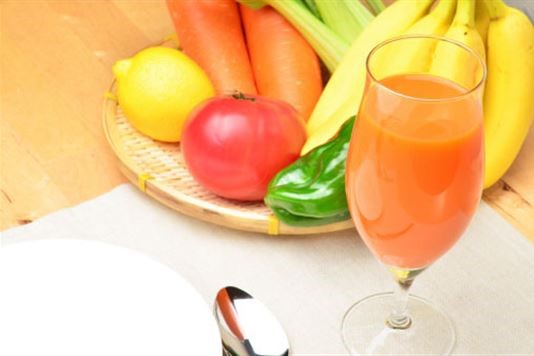Top 10 homemade juice recipes

If your New Year resolution was to eat more fruit and veg, then Rebecca Rutt’s 10 homemade juice recipes will be right up your street.
Take some of your five a day the easy way. Just grab a juicer and these ingredients.
Pear, pineapple and ginger
This juice is naturally sweet, packed full of vitamin C and great served over ice. The texture of the pears means the end result will be a thick, filling juice with an extra kick of ginger to give it a burst of flavour. The recipe is one of Jason Vale’s, aka the ‘Juice Master’, and it’s an easy one to make as it only has three ingredients.
Kale, carrot, apple and ginger
Kale is often described as a ‘superfood’ because of its high iron content and antioxidant properties, although the taste is not everyone’s cup of veg. However, juicing it with sweeter ingredients, such as carrot and apple, can successfully overpower its bitterness.
Beetroot, cucumber and carrot
Beetroot naturally helps clean up the digestive system, but as drinking it straight can be quite intense, Sarah Cadji, founder of Roots and Bulbs, adds cucumber and carrot. The outcome is a cleansing juice which is not only delicious but can help heal your gall bladder, liver, kidneys and prostate.
Pear and parsnip
This mix from Jason Vale might sound a bit odd, but it works. The parsnip adds a pleasant savoury balance to the sweetness of the apples and pears. The extra ingredients of lime and mint give the flavour an exciting extra layer and served over ice it makes a great ‘mocktail’ for those avoiding alcohol.
Orange and carrot
Oranges and carrots work well together in this simple yet appetising juice. I use a 50/50 ratio when making it and two of each is enough for a generous-sized glass. Not only is it packed full of vitamin C, but you’ll also find Beta-Carotene which will give your immune system a much-needed boost during the winter months.
Beetroot and berries with broccoli and carrot
The fresh berries in this juice sweeten the beetroot flavour and help to mask the taste of the broccoli and carrot. If you’re only going to pick one juice, then this is a good option because it packs so much in. Instead of drinking it straight, pure coconut water can be added which makes it go further.
Carrot, orange, apple and ginger
Some of the best juices are those with only a few ingredients - and they’re easy to make if you’ve got a busy lifestyle. I often add a dash of cayenne pepper to this one, which along with the fresh ginger creates a welcome spicy heat – a great way to arm yourself for the cold season.
Fennel and pineapple juice
Fennel is known for its calming affect on the digestive system and can help detoxify the body – ideal if you’ve over-indulged over the festive period. But the aniseed taste isn’t that appealing, so juicing it with pineapple means you can drink it with the zingy, fresh flavour of pineapple blocking out the aniseed taste.
Spring green juice
There are lots of varieties of ‘green juice’ around, but this is one of the best. In one glass you’ll find half a cucumber, a large bunch of kale, two apples, 250g of spring greens and a handful of mint. It’s an easy way to boost the amount of vitamins in your body and the apples are able to conceal most of the taste from the vegetables, making it a sweet and incredibly refreshing morning juice.
Blueberry, spinach and lemon
Fresh berries are expensive and don’t produce much liquid, so opt for the frozen variety and when juicing mix them with a cheaper fruit or vegetable, such as spinach. Juice the spinach first, followed by the blueberries and then the apple to make sure you get the most liquid possible out of each ingredient. Spinach is a milder-tasting option than something like kale, and is a good alternative if you’re looking for a green juice but are not willing to drink an entire salad in liquid form.
What to do with the pulp
A juicer is a great way to create instant juice drinks without much hassle, but if you’ve ever cleaned one you’ll know just how much pulp is left at the end. Instead of throwing this away, it can be used for a number of different recipes or added to soups and stews to thicken them up.
Pulp is a good base for homemade veggie burgers and vegetarian meat balls. There are lots of ways to incorporate pulp into baking too, such as fruit and vegetable muffins or cakes. If you can’t think of anything to do it with immediately, stick it in a freezer bag to use at a later date.
You might also like
Most Recent
Comments
Be the first to comment
Do you want to comment on this article? You need to be signed in for this feature








